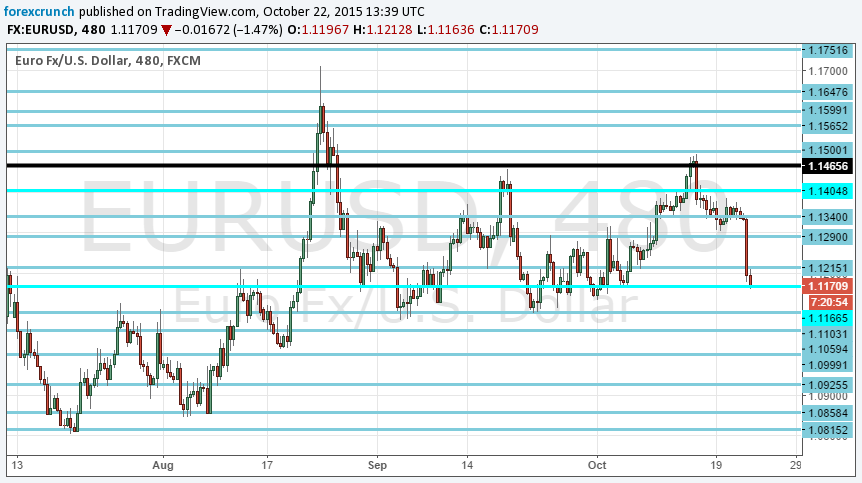Draghi delivered dovishness. He more than delivered and this dragged down the euro quite strongly. This kind of message was not priced in, to say the least.
Here are 5 highlights of what he said to bring the common currency to its knees and some levels to watch.
The ECB was expected to hint about an extension of QE in December and this was mostly centered around extending the program beyond September 2016. He did much more than that:
- Will re-assess QE: this opened the door not only to changing the length of the program (as many had expected), but also the size: it could go beyond 60 billion per month.
- Cutting rates was discussed: Remember that Draghi said that rates have reached their lower bound? Well, that’s just September 2014. Things have changed since then: negative deposit rates are working, so why not lower them below -0.20%. This was the second blow.
- Emphasis about the exchange rate: We already saw that the ECB reacts to every rise in the euro with comments that try to push it down. But in this instance, Draghi certainly made a point and provided figures about the impact of the exchange rate on inflation. He is sending a bigger hint / threat to markets.
- Fear of deflation: In the words of Draghi and VP Constancio, there seemed to be greater fear about a deflationary spiral, including from the impact of oil. Yes, they do hope to see inflation rising thanks to a change in the “base” – aka the removal of the oil impact a year after the November 2014 OPEC decision not to cut production. However, this is very different from the Fed’s approach to oil and inflation: that it is only a transitory effect. The ECB fears a long lasting effect.
- Vigilance: When you try to impact the market through talking, you need to use the best possible language. Draghi’s predecessor Jean-Claude Trichet used the phrase “strong vigilance” to send a thick hint to markets: a rate hike next month. Draghi used the same word regarding inflation and this sent a signal to markets that he means business: a further cut of the deposit rate? Printing more money? Or even both?
The reaction on EUR/USD was clear to see: a fall worth over 150 pips from the pre-announcement level of 1.13, which was already low.
More: EUR/USD loses uptrend support on the Draghi Drag
Levels to watch on the downside are 1.1120, 1.1080 and 1.10. On the topside 1.1215 is weak resistance, followed by 1.1290 and 1.1340 (the shoulder line).
In September, we haven’t seen a follow through: after around 24 hours, the euro recovered. But this time may be different because of these 5 blows. What do you think?
More: EUR/USD: Volatile Path Toward Parity By Year-End – BofA Merrill
Here is the chart:

